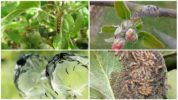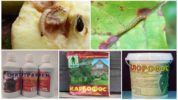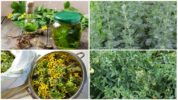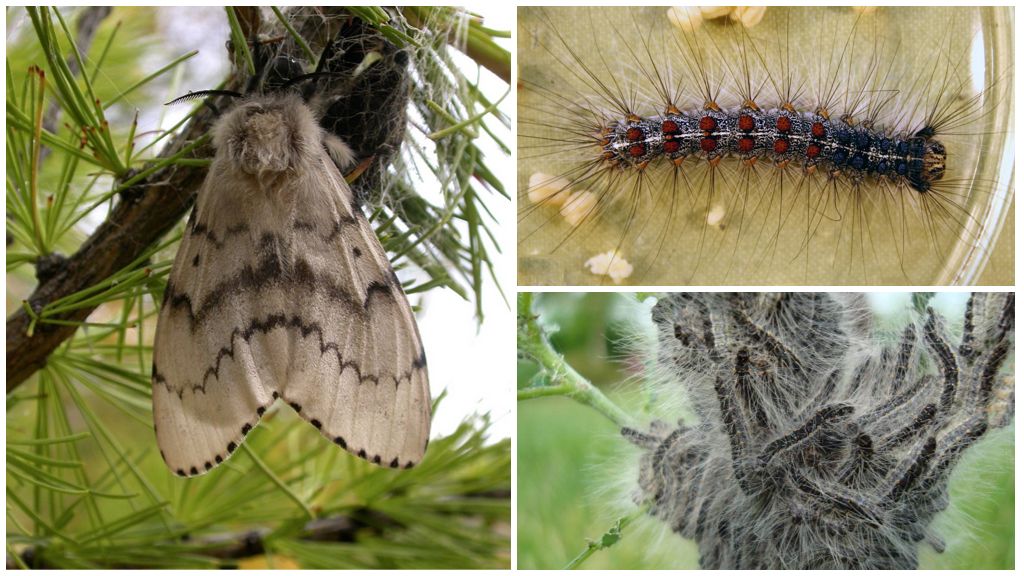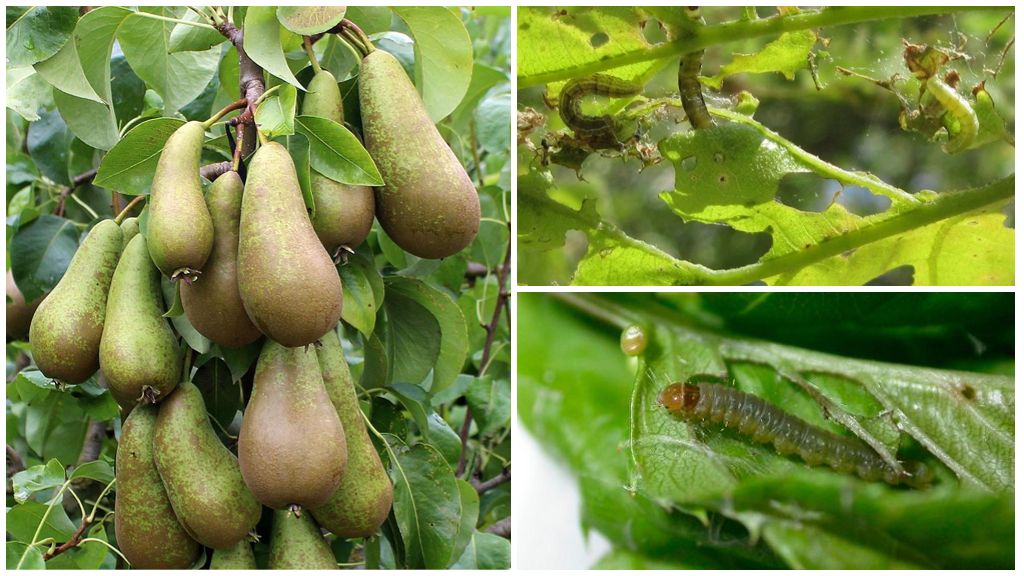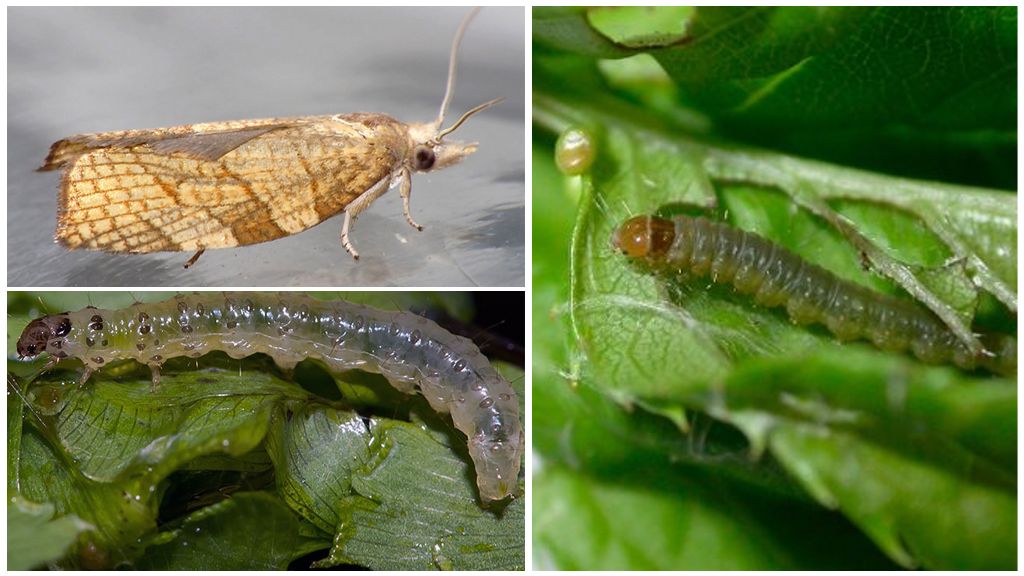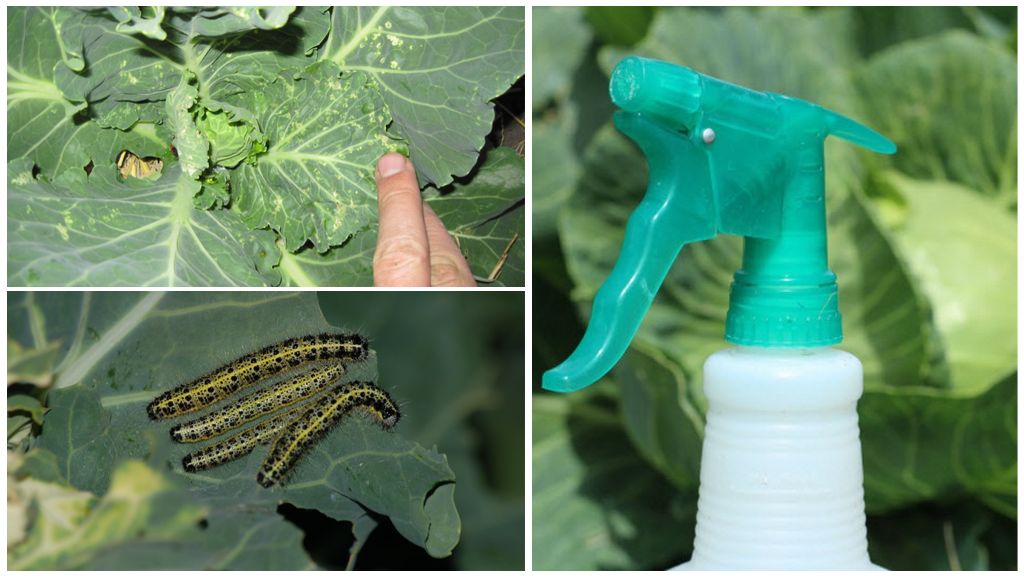- Caterpillars on the apple tree
- Chemical methods for the destruction of tracks
- Folk caterpillar control
Apple trees grow in almost every garden plot, bringing annually a plentiful harvest to their owners. However, many problems are caused by harmful insects and their larvae, who like to feast on foliage and fruits. There are many ways to deal with caterpillars on the apple tree. The choice of method depends on the amount of damage, the time of detection of pests.
Pests of fruit trees and harm from them
Caterpillars are one of the forms of existence and development of butterflies, moths or other insects that lay their eggs and parasitize in the greenery of shrubs and trees. Their most negative trait is gluttony and good adaptability to living conditions. Larvae or caterpillars on the apple tree can completely destroy flowers, leaves, ovaries and fruits on the tree.
In order to begin the fight against such pests, it is necessary to determine the type of insect whose larva causes damage to fruit crops on the site. To do this, you need to conduct regular external inspection of trees in order to detect caterpillars and their results.
Signs of the settlement of larvae on a tree:
- The web with caterpillars found on the apple tree allows you to accurately verify their presence on the plant. The main types of pests capable of producing it are ermine moths, moths, ringed and unpaired silkworm, hawthorn.
- The appearance of small black caterpillars on the apple tree indicates its defeat hawthornand large and shaggy, 6-7 cm long are silkworm larvae.
- Larvae that have settled under the bark are capable of going unnoticed for a long time. They gnaw through numerous strokes in the trunk, damage it and increase the risk of the tree becoming infected with fungal diseases and bacteria, which can lead to the drying out and death of the tree. Under the bark live caterpillars of such lepidopteran insects: apple glass-moths, woodworms, codling moths, etc. To find them, it is necessary to look at the entrance points during inspection, surrounded by their excrement and the remains of vital activity.
- Small caterpillars on the leaves of the apple tree are the larvae of the moth, which are able to eat up the young greenery completely, leaving the tree without foliage and ovaries.
- The settlement of caterpillars in the buds can be easily detected, which will allow you to quickly take measures to destroy them. However, it is they who cause the greatest harm to the future crop, eating flowers and ovaries. Lovers of buds include caterpillars of leafworms, codling moths and hawthorns.
On a note!
Leafworms can appear not only on apple trees, but also on pearsgooseberries currant and other fruit and flower cultures.
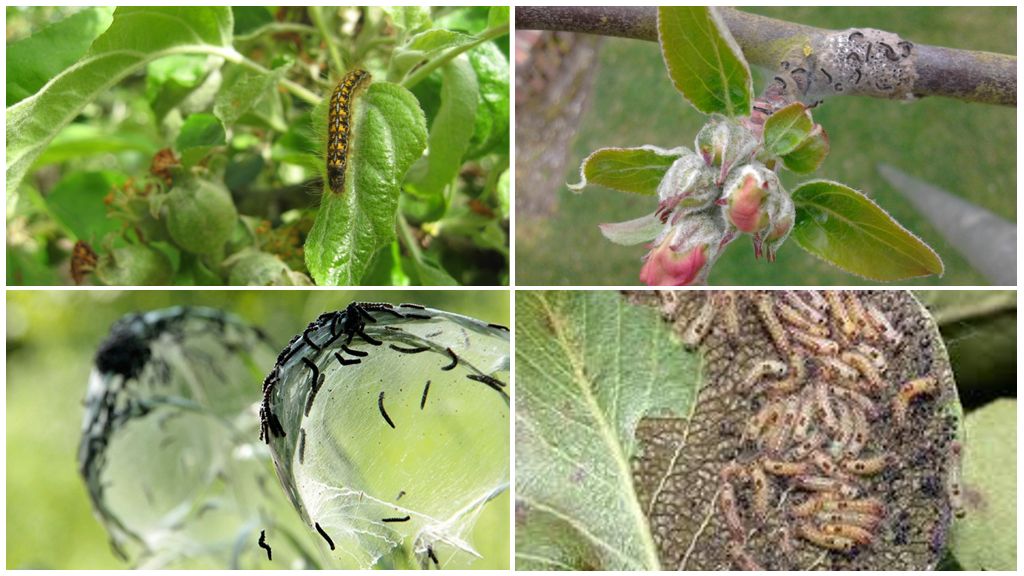
Methods of struggle
To get rid of the caterpillars on the apple tree with high efficiency, 2 factors must be taken into account:
- Correctly classify the pest: the presence of wrapped leaves indicates an attack on leafworms; the web in the crown of the apple tree indicates its defeat from the apple moth. Gray caterpillars emerge from eggs laid by a butterfly hawthorn, etc.
- Use an integrated approach, which includes timely pruning of the tree, feeding and watering, carrying out preventive measures against the appearance of butterflies and laying eggs - such actions should be carried out regularly throughout the year, starting from early spring and ending with a frosty winter.
Codling moth
The caterpillar of the codling moth is one of the most common pests of fruit trees. Its pupae hibernate in the soil near the trunk, and in spring butterflies that emerge from them lay eggs, from which small worms appear, which begin to eat out the core of young fruits and even seeds, moving from one apple to the next. They are able to spoil a large number of fruits, from which unripe apples fall down.
Effective methods for controlling moths include:
- timely collection of fallen fruits to destroy them along with the caterpillars;
- regular cleaning of the bark and imposing of hunting belts on the trunk;
- the use of insecticides is carried out after the flowering of trees: in order to process an apple tree from caterpillars, solutions of chlorophos (0.2%) or kalbofos (0.3%) are used.
On a note!
Before spraying the entire garden, it is recommended to treat 1 tree first to check the effect of the solution and the absence of harm to the plant. If after a day everything is fine, then the chemical preparation can be applied to the rest of the plantings.
Methods of dealing with leaflet
The green caterpillars that emerge from the butterflies of the butterfly leaf, feed on flowers and young buds on the apple tree, and then settle in twisted leaves covered with the cobwebs they secrete.
Effective methods for destroying leaflets on the apple tree:
- manual collection and burning of affected leaves along with nests;
- in case of severe damage, chemical preparations are used: a solution of Nitrafen 3% is treated before flowering of the apple tree, then repeat after 10-14 days.
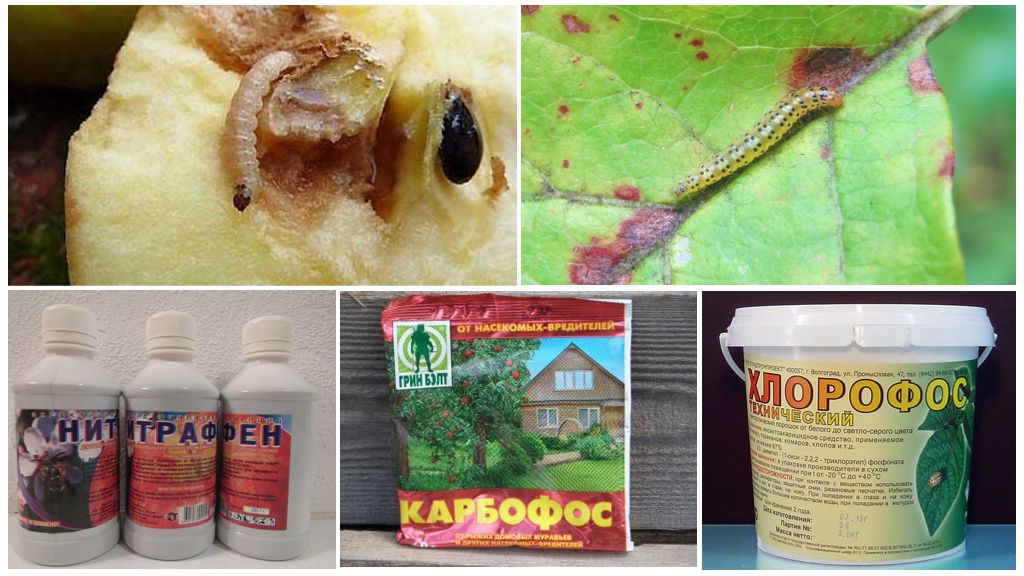
Folk methods
In order to effectively fight folk remedies with caterpillars on fruit trees, it is recommended to use proven methods:
- Flushing them with a strong stream of water, then you need to collect and burn.
- Fighting the black caterpillars on the apple tree at the first sign of defeat is recommended by simply mechanically shaking them off the branches onto a film under the tree and burning it.
- Plant rows of tomatoes between trees in the garden, the smell of the tops of which repels butterflies and other insects.
- The use of glue belts on tree trunks that impede the movement of larvae from the topsoil to foliage, branches and ovaries.
- In June, the apple trees from the caterpillars can be sprayed with a concentrated solution of needles, celandine, tansy or burdock 12-14 days after flowering, then the treatment should be repeated every 2 weeks.
- Treatment with tansy tincture should be done every 5-6 days.
- The use of infusion of celandine: 1 tbsp. dry leaves pour 10 liters of water, let it brew for 2 days, strain, add 2 tablespoons of liquid soap and spray the trees.
- A decoction of tomato tops is prepared from 1 kg of green mass in a bucket of water, which is insisted for 4-5 hours, then kept on low heat for 3 hours. Before processing, the solution should additionally be diluted with a clean liquid in a ratio of 1: 2.5.
- Wormwood broth is prepared from 1 kg of dry or fresh flowers and 1 liter of water, boil for 15 minutes. and add water to the bucket.
- Caterpillars can be removed with home remedies, which include soda, vinegar and laundry soap. The prepared solutions should be sprayed with foliage and ovaries.
On a note!
All plant infusions and decoctions must be reused 3-4 times with an interval of 6-7 days. Popular recipes are often better changed, because pests quickly get used to them.
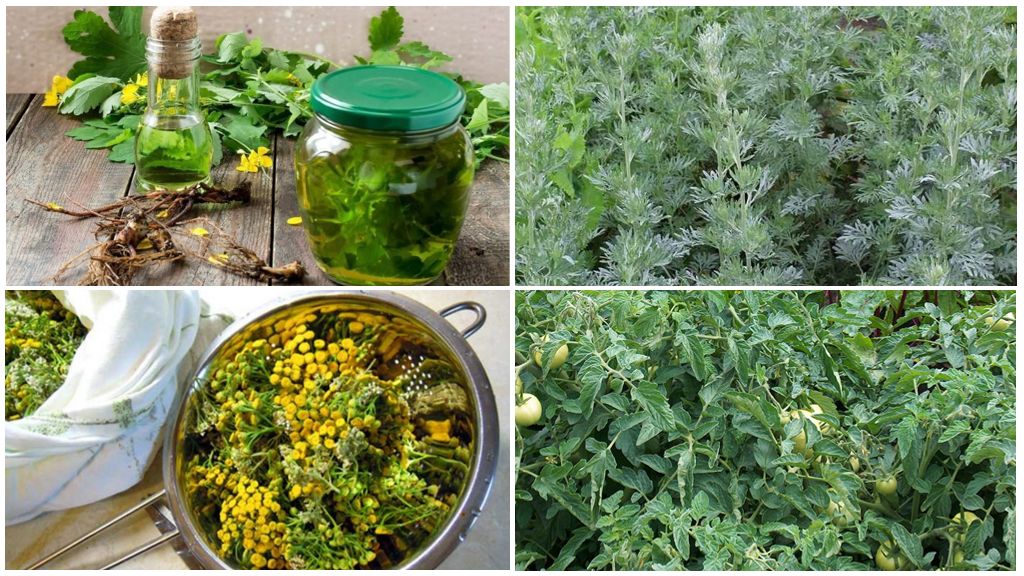
Chemicals
On sale there is a large selection of insecticidal remedies for caterpillars on apple trees, which include:
- Intavir is a synthetic pyrethroid containing cypermethrin, which acts negatively on the nervous system of insects and caterpillars (leafworms, moths). Available in the form of tablets and powder, which must be dissolved in water. The rate of consumption of the finished solution: 10 liters per tree, a total of 2-3 treatments can be done.
- Tanrek - a systemic insecticidal drug, the active substance imidacloprid, is available in concentrated form. The solution is prepared at the rate of 3 ml per bucket of water. It allows poisoning caterpillars for 3 weeks after spraying, but it can not be used during the flowering and fruiting of the apple tree.
- Karbofos, Fufanon - organophosphorus insecticides containing malathion, which has a contact-intestinal effect and quickly poison insects. Validity - up to 10 days. It is recommended to do the processing only during the growing season, at least 3 weeks before harvesting. In total, 2 treatments are done.
- Fitoverm is a biological product that can be used to treat apple trees after flowering so as not to use chemistry during the period of fruit growth. The solution is prepared by adding the contents of the ampoule to 2.5 liters of water.
Important!
When using any toxic insecticidal agents, protective clothing, a respirator and gloves should be worn to prevent poisoning. Before starting treatment, you must carefully read the instructions and recommendations for preparing the solution in the correct proportion so that it is as effective as possible against these pests.
Prevention of the appearance of caterpillars on fruit
To reduce the number of larvae and adult insects, it is necessary to regularly inspect apple trees and other fruit trees and carry out the following activities:
- inspect the bark on the trunks in the spring, burn nests with cobwebs, damaged leaves and egg laying;
- carry out bleaching and treatment of the trunk and apple tree soil near it with biological products (Endobacterin, etc.);
- regularly use herbal infusions for spraying and pest protection;
- hang in the garden feeders attracting birds that are able to destroy a large number of caterpillars and other insect pests.
Such an integrated approach in the fight against caterpillars on apple trees will help to destroy the maximum number of pests, protect fruit trees and grow a rich apple crop.
